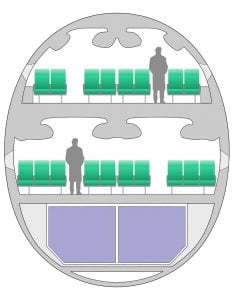New Delhi: An IndiGo flight took off from Mumbai a few days ago with a baggage handler in the aircraft’s cargo compartment. The loader had fallen asleep in the cargo bay. When the aircraft landed at Abu Dhabi, its destination, a medical checkup found him to be in good health.
Like an aircraft’s cabin, the cargo compartment is also pressurised, which means if you are safe in the cabin at high altitudes, you are also safe in the cargo bay.
A plane’s cargo compartment is pressurised for various reasons.
The round/oval shape of the fuselage is very efficient at withstanding pressure. For this reason, everything within the fuselage shape is pressurised, including the cargo hold below the cabin floor, according to a response on Aviation Stack Exchange, an aviation website. Even in unheated cargo holds, the temperature should be above freezing, it says.
According to Patrick Smith, airline pilot, air travel blogger and author, popular for his Ask the Pilot column and Cockpit Confidential, “a lot of people are under the impression that the underfloor spaces are freezing and unpressurised. Not true… the underfloor holds are always pressurised and heated”.
An aircraft engineer writes on another online site that “the passenger floor in the cabin has to be extremely strong to withstand the differential pressure if the cargo hold is not pressurised”.
Pets also travel in a designated section of the cargo bay, that’s also another reason why the place is pressurised and temperature-controlled.
Pressurisation of the cargo hold is also required to prevent damage to pressure-sensitive goods that might leak, expand, burst or be crushed on re-pressurisation, according to Wikipedia.



Comments are closed.